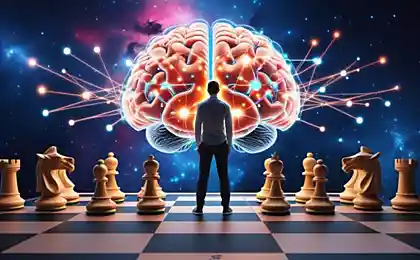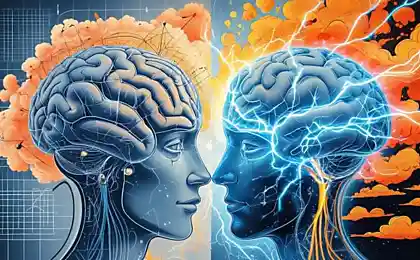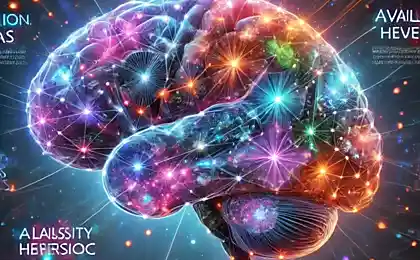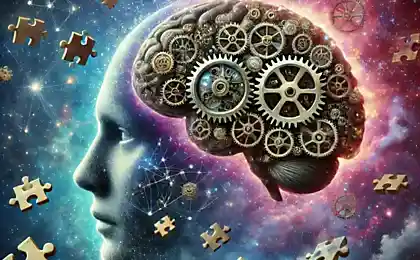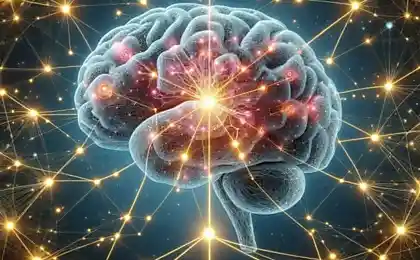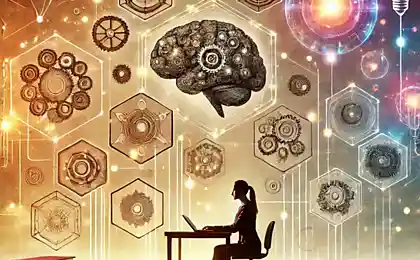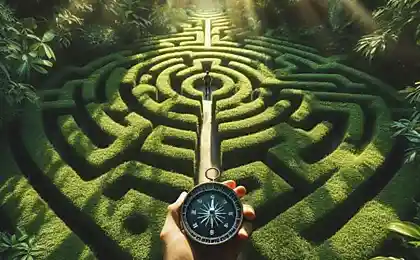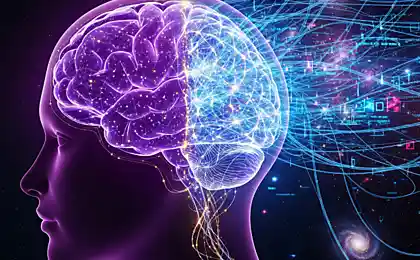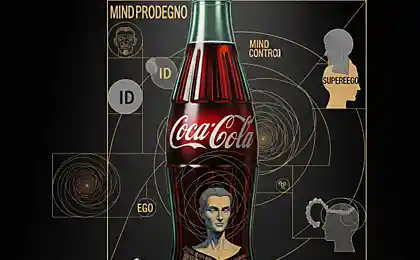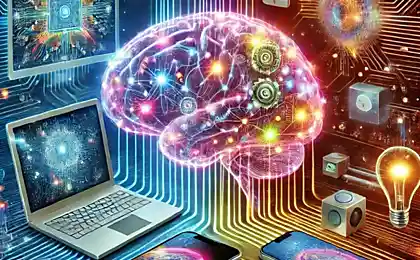301
What is cluster thinking and how not to give in to false choices

In a world where we make thousands of decisions every day, from choosing a morning drink to making strategic career moves, our minds are looking for ways to simplify the process. One such mechanism is cluster thinking A cognitive process in which we combine certain attributes or characteristics into groups, believing that there are natural relationships between them. But what if these relationships are illusory? What if they lead to systematic errors in judgment?
Cluster thinking is not just a way to categorize information, but also a powerful tool that shapes our perception of reality and influences decisions. It can be both our ally and our hidden enemy.
The nature of cluster thinking
From an evolutionary point of view, cluster thinking has evolved as a mechanism for saving cognitive resources. Our brains, in pursuit of energy efficiency, create mental patterns by grouping similar elements together. For example, when we see a round-shaped red fruit, we automatically categorize it as an apple, without even analyzing all its characteristics in detail.
However, in today’s world of complex information and nuance, this same ability can become a source of cognitive distortion. Nobel Prize-winning psychologist Daniel Kahneman calls this “fast and slow thinking,” where fast thinking (System 1) relies on associations and patterns, and slow thinking (System 2) requires deep analysis.
Key characteristics of cluster thinking:
- Automatic grouping of objects or ideas by perceived similarity
- Attribution to all elements of the cluster properties characteristic of only a part of them
- Increased differences between clusters and similarities within them
- Creating false correlations between unrelated characteristics
- Resistance to information that contradicts established clusters

How cluster thinking creates false choices
One of the most dangerous manifestations of cluster thinking is the creation of false dichotomy – the illusion that there are only two mutually exclusive choices, when in fact the range of possibilities is much wider.
A 2021 study from Harvard University found that cluster-minded people were 43 percent more likely to perceive complex decisions as a simple choice between two polar options, ignoring intermediate solutions.
Consider a few common false choice scenarios created by cluster thinking:
1. Professional field
Cluster thinking can create a false dichotomy between creative and analytical professions. We believe that a person is either creative or logical, and based on this, we make a career choice. In practice, most successful professionals, from programmers to designers, use both types of thinking.
2. Interpersonal relationships
In relationships, cluster thinking manifests itself in the categorization of people into “us” and “aliens”, “good” and “bad”. However, people are multifaceted, and the inability to see this complexity leads to superficial connections and conflicts.
3. Purchasing decisions
Marketers actively exploit the tendency to cluster thinking by creating associations between unrelated characteristics. For example, a product labeled as “natural” is automatically perceived as healthier, greener, and even tastier, although these properties are not necessarily related.
Always ask yourself, “Is there really only two options?” and “What alternatives can I ignore?” This simple technique helps to break false dichotomy and expand the field of possible solutions.
Practical strategies for overcoming cluster thinking
Understanding the mechanisms of cluster thinking is the first step towards liberation from its limitations. Here are some techniques to help you make better decisions:
1. Practice declustering
Declustering is the conscious separation of characteristics that we automatically combine. For example, if you think “expensive means quality,” try evaluating the quality of a product regardless of its price based on objective criteria.
2. Use the decision matrix
Instead of simplifying the choice of two alternatives, create a solution matrix where each option is evaluated against several independent criteria. This will allow you to see that variant A may be better in some ways, and variant B in others.
3. Attract diverse perspectives
Research shows that collective decision-making is less affected by cluster thinking if the group is sufficiently diverse. Before making an important choice, consult with people with different experiences and worldviews.
4. Implement "devil's lawyer"
Assign a person (or take on the role) who will deliberately challenge established clusters and offer alternative views. This practice is widely used in the corporate world to overcome group thinking.

5. Enter a period of "cognitive pause"
Before making an important decision, set aside time for a “cognitive pause” – a period when you deliberately refrain from thinking in familiar categories. This can be meditation, walking in nature, or any activity that takes you out of your habitual mental patterns.
Neurobiological studies show that even 15-minute meditation can temporarily reorganize the neural patterns responsible for categorization, which promotes more flexible thinking.
Cluster Thinking in the Information Age
In the era of social media and algorithmic recommendations, cluster thinking is amplified by echo chambers and filter bubbles. Algorithms that show us content similar to what we already consume strengthen existing mental clusters and prevent the formation of new neural connections.
To counter this, it is necessary to deliberately diversify information flows and question familiar categories. Subscribe to sources representing different points of view. Regularly review your beliefs and be open to information that contradicts your beliefs.
Conclusion
Cluster thinking is an evolutionary mechanism that helped our ancestors make quick decisions in an environment of limited information. In today’s complex world, however, it is often a source of cognitive bias and false choices.
A conscious approach to the categorization process, a regular practice of declustering and a critical attitude to your own mental models will allow you to make more informed decisions, see a wider range of possibilities and avoid the pitfalls of false choices.
Reality is rarely black and white, and true wisdom lies in the ability to see and appreciate the variety of shades.
Glossary of terms
Cluster thinking
A cognitive process in which we combine certain attributes or characteristics into groups, believing that there are natural relationships between them.
Cognitive distortions
Systematic deviations in perception and thinking due to subjective beliefs and affecting decision-making and judgment about the world.
System 1 and System 2
A concept proposed by Daniel Kahneman, where System 1 represents fast, automatic, intuitive thinking, and System 2 represents slow, analytical, effortful thinking.
False dichotomy
A logical error in which a complex situation is presented as a choice between two mutually exclusive options, ignoring the existence of intermediate or alternative options.
Declastering
The conscious process of separating and independently evaluating characteristics that are usually automatically combined in our thinking.
Echo chamber
A situation in which information, beliefs and opinions are reinforced or reinforced by repeating them within a closed system and blocking alternative or competing views.
Filter bubble
A state of intellectual isolation that can occur when website algorithms selectively select information that a user can see based on their previous actions or preferences.
Sources: research from Harvard University, the work of Daniel Kahneman, materials on cognitive psychology and decision-making.
5 Suggestions on How Humanity Will Evolve
The Popcorn Brain: Why You Switch From One Task to Another
